Coffee has become an unstoppable force around the world. More than 2 billion cups of coffee are drunk every day across the globe – confirms that it’s not just a drink, but the lifeblood for many people. Living without coffee would be impossible.
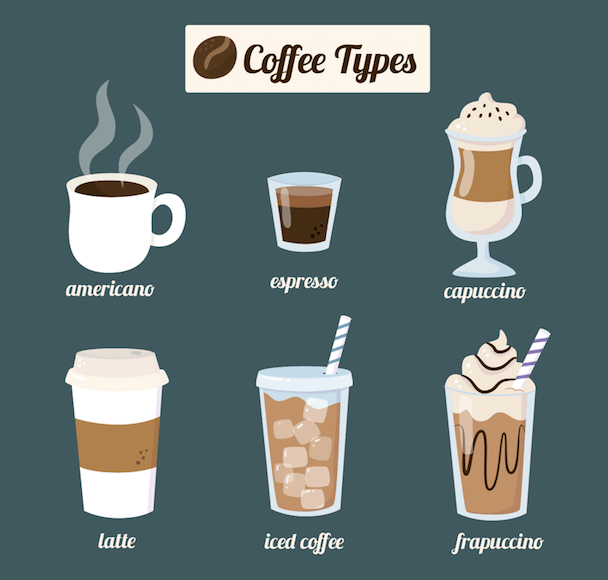
Now it’s a whole new world with its own aroma, coffee flavors, and festivals, which have taken permanent residency in our lives.
Understanding Coffee Names
If you’re a new member of its high streets, you might be confused with the language of the coffee menu and asking yourself, what the hell is macchiato?
- Should I order this drink with silky-textured foam?
- Will the barista think I’m a wimp if I ask for a drink with lots of milk?
Take a deep breath; in this guide, I’ve outlined almost all coffee names you find at your local caffé menu, so next time you’ll know what to order – and expect.
Basic Coffee Drinks
Black Coffee
Black coffee is like a beautiful black dress in the beverages world. From simple to sophisticated, it goes with everything from ports shipping to bedrooms, polytechnic to small-town diners, American cowboys to French Press models.
It’s a timeless classic – so even if you’re racing against the clock, you can still have a cup of joe before heading out to the commutes. Simply boil some water and add coffee (beans, grounds, or leaves) to it. Refine carefully – and you’re ready to clench fingers around your perfect cup of caffeine.
No flavoring, it’ll blow your mind! If you perceive it for the first time, you may think it tastes bitter or ashy, yes it probably does. But the natural sweetness and other flavor attributes are unique to this drink.
Furthermore, you might find many good reasons to drink black coffee, but the health benefit of cutting down on dairy and sugar will probably spark your desire to know more about the flavor nuances of black coffee.
But if it’s burning your tongue or your taste buds aren’t accepting its taste, you can add the cream or milk and sugar or artificial sweetener to alter the favor to match it to your style.
Lastly, it won’t hurt your wallet as you’ll usually find it as the comparatively cheapest option in most of the caffé menus.
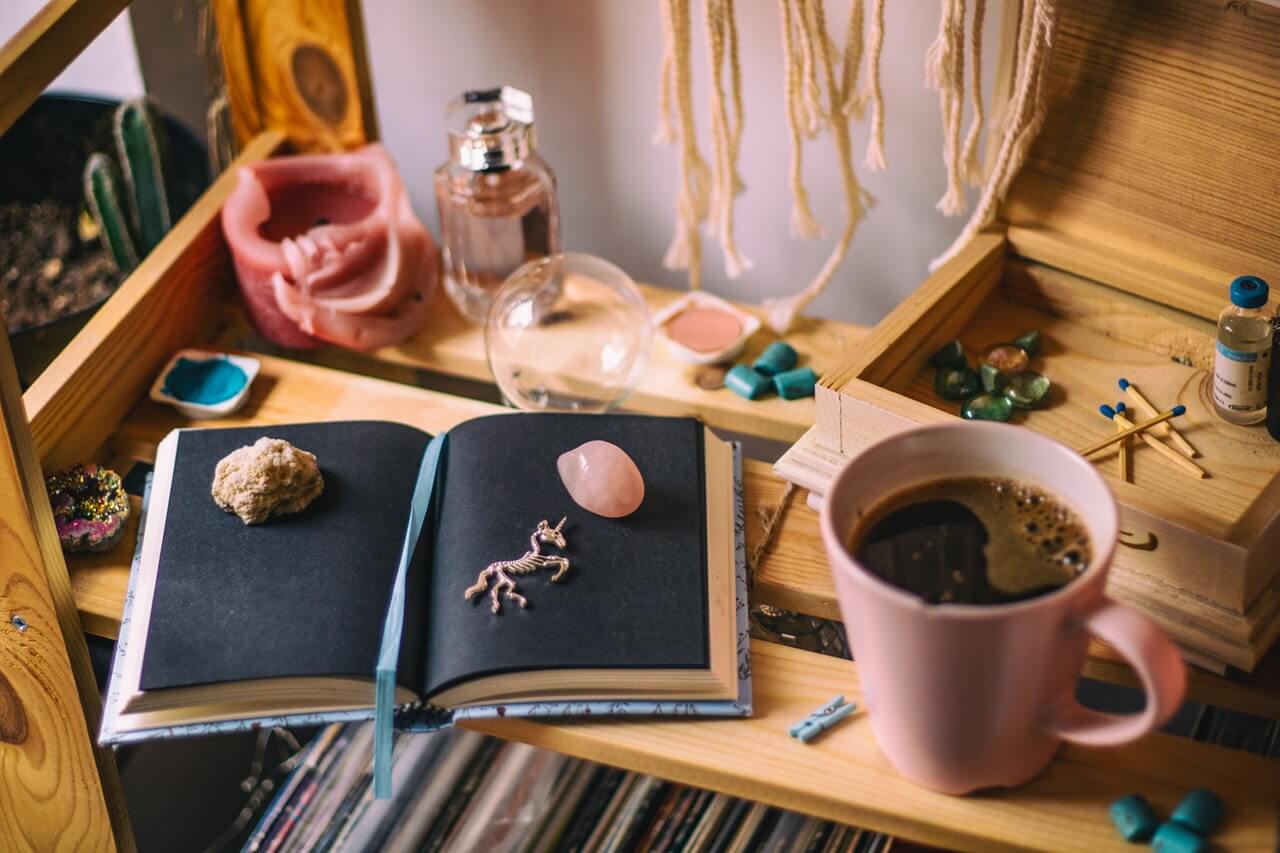
Turkish Coffee
When it comes to coffee, Turkish coffee enthusiasts adore to quote;
Coffee should be black as hell, strong as death and sweet as love.
Even though coffee shops offering espressos, flat whites, and cappuccinos have become popular in Istanbul, still, Turkish Coffee is a crucial part of their culture and a perfect addition to any deep conversation with friends and family members.
Turkish coffee culture and tradition have got the UNESCO World Heritage status because of their special preparation and brewing method. So, even if you haven’t traveled to Turkey ever, you probably heard the reference or even tried it.
But if you don’t know, when you’ll refer the nose-ringed barista about “Turkish Coffee,” most of the time, it means you’re asking for a thick, black coffee.
However, if you want to try it out at your home, it won’t require you to have any special barista skills to make an intense cup of java.
Here is the breakdown of steps:
- Simply boil one cup of water along with two tablespoons of coffee grounds in a cezve, a small pot with a long handle, usually made of copper – it’s also known as ibriks.
- Since sugar is never added before, you’ll have to specify how much you want to add. You can get it with no sugar, one sugar cube for semi-sweetness, or two cubes for very sweet Turkish coffee.
- As the coffee reaches the boil, let the foam rise and remove it from heat before it’s about to spill. This makes sure your coffee will have full foam, and without it, it’s totally unacceptable.
- You can repeat the 3rd step several times.
Serve it in a small cup; it never means it’s to be consumed quickly; sip a little, talk to your pals and repeat.
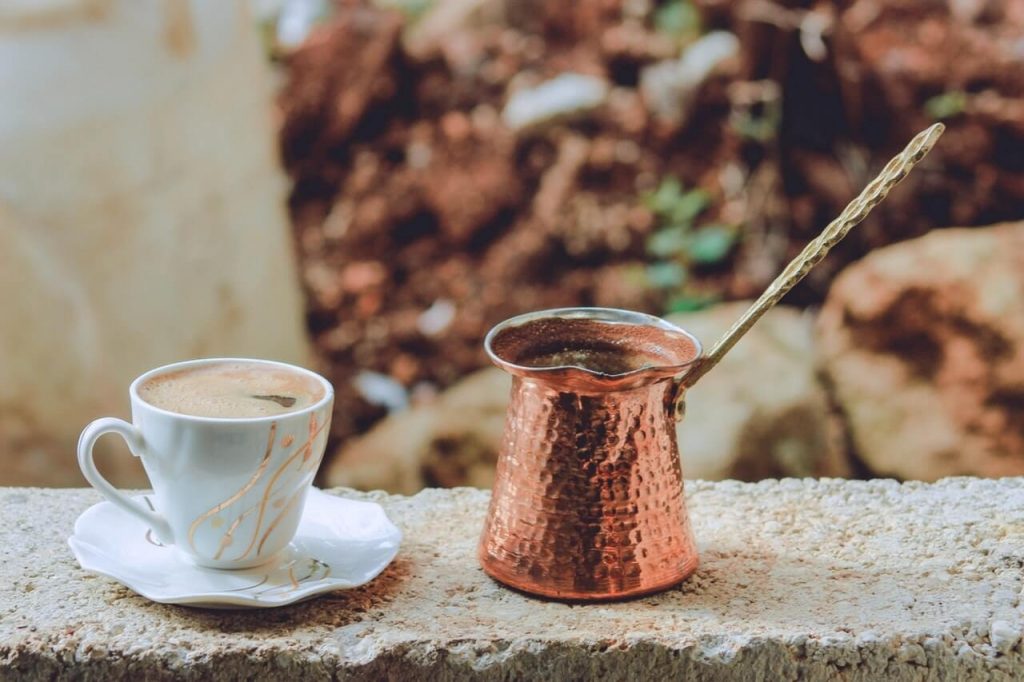
Cold Brew
It’s more than just the cool, it gives you caffeine-sip of iced coffee. Started from boutique coffee shops, it could take its place on the Caffe menus of big leagues like Starbucks and Peets.
The flavor is one of those handful of reasons why Cold Brew exploded over the last few years, and with the first sip, you may think why people didn’t cold brewing coffee ages ago.
It’s probably gonna be your best-loved drink If you’re a fan of a smooth, balanced cup of coffee with very low acidity, capped with a creamy body.
You won’t have to beg your organs to co-operate for this drink, It’s pretty much discomfort-free even for an impatiently empty stomach.
In a nutshell, if you’re sensitive to acidity, Cold Brew is your lifesaver.
Dilute the concentrate with milk, and you’ll have your iced latte ready to taste. Or, mix the concentrate with your spirit of choice, and you’ll have another version of Cold Brew (caffeinated cocktail) ready to guzzle; it’s so delicious!
So, what I mean? Flavor possibilities are endless with Cold Brew!
Iced Coffee
Wait! Cold Brew isn’t the Iced Coffee?
Iced coffee can be any form of coffee – drip, pour-over and even espresso. But cold brew is a specific style of iced coffee or an iced coffee technique. One isn’t better than others; they are made differently and have distinct tastes.
When you ask the barista for a cold brew coffee at a restaurant or coffee shop, you’ll be given out a cup of java gently stirred with iced cubes.
Its methodology is basically the direct exposure of cold water with coffee grounds for about 12-16 hours to ensure the best and flavorful experience of cold brew. Once the steeping ends, the concentrated liquid is mixed with water to make you a strong and delish cup of cold brew.
On the other hand, when you’ll order an iced coffee, often you’ll be served with a hot coffee poured over ice.
It might taste too diluted so most of the java drinkers now prefer coffee brewed at double strength (by using the double amount of coffee), but it can also be the drip coffee that’s dispensed directly over the ice diamonds or chilled in the fridge and voila!
You’ll see plenty of iced coffee specialties in most of the coffee bars as it doesn’t take much time to brew one cup, you point your finger at the bill of fare.
Variety of Espresso Based Drinks
Espresso is the backbone of an array of mouth-watering caffeinated beverages.
If you’re new to the coffee world, you probably observed the java lovers requesting the skilled barista for “single-shot” or “double shot.” In other words, they were actually demanding the small concentrated punch of all those natural antioxidants in a tasty package – the espresso.
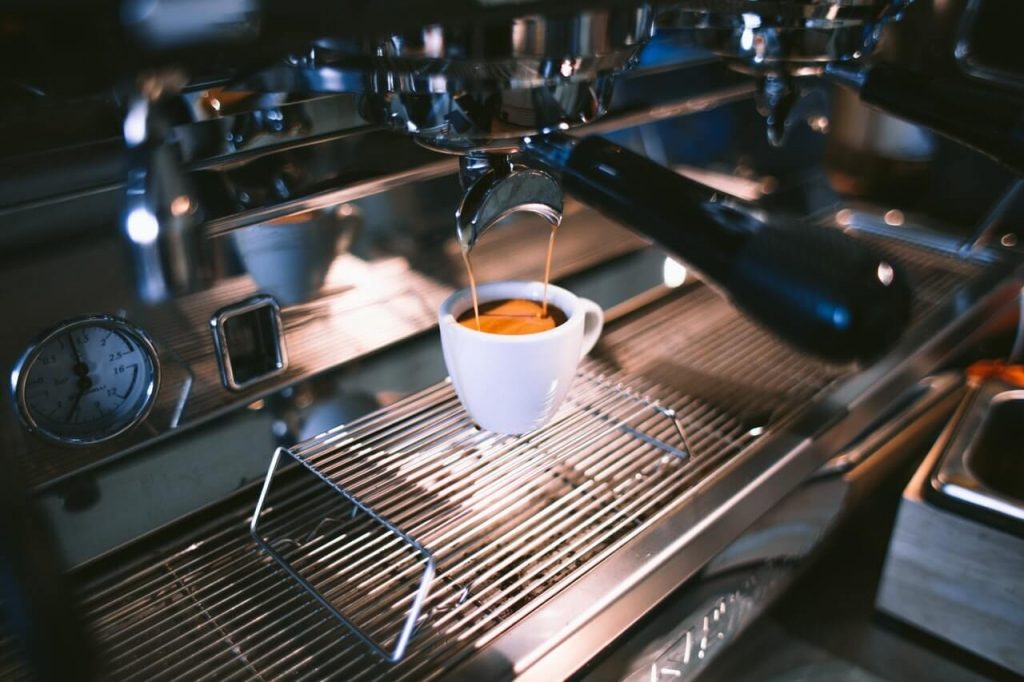
So, why do people love espresso? You just can’t deny the soul-touching aroma of freshly brewing shot, its taste, huge energy boost, less caffeine per ounce, crema topping, and most importantly, the punch of dozens of health benefits in each sip.
Most of the delicious specialties develop from espresso, and that’s why they are dominating the majority of space on the menu. It’s the form of heart and soul of every latte, cappuccino, and plenty of other variations – mocha or flat white, we just can’t get enough.
But before dive into the sea of espresso drinks, you just need to know how expert baristas craft satisfying espresso shots to make your best-suited cup of java.
The process involves producing a concentrated liquid by forcing the water at an optimal temperature (190 to 196 degrees Fahrenheit) and pressure (usually 9 to 15 bars) for 18 to 20 seconds through perfectly fine coffee grounds.
A properly extracted shot looks deliciously smooth, capped with a velvety crema and an intense aroma. With the first sip, you’ll certainly fall in never-ending love with this cup of joe.
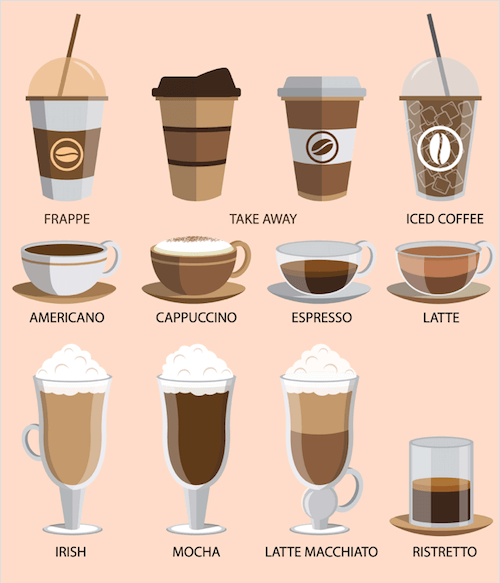
Let’s find out how baristas around the world use this Italian invented wonder to craft those delish specialties that shine like stars on the cafeteria menu.
Ristretto
“Restricted” or “limited” in Italian means, it’s simply the first half of a full espresso shot while using the same amount of coffee grounds. Gourmet coffee enthusiasts often prefer ristretto as it gives you a sheer quality along with the rich and aromatic flavor of coffee beans.
Don’t be fooled with the word “little”; this fun-size shot is packed with such a great punch.
A single ristretto shot should be 15 ml, while 30 ml for a double shot.
Doppio
In Italian “doppio” means “double,” it means you want double shots of espresso. It’s extracted using a double coffee filter in the portafilter so you get 60 ml of espresso served in a demitasse cup which is twice the amount of a standard espresso shot, 30 ml.
Now many coffee shops around the world only offer double espressos to overcome the quality control issues. Often, it’s also called as “standard double,” so you don’t need to confuse if a barista uses this term to confirm your espresso drink.
Americano
At first, it’s thought to call “Caffe Americano,” but over the years it has been shortened to just “Americano.”
Even when you request the barista in an American way, you’ll still be served with an Italian drink, prepared by diluting the espresso shot with hot water, that’s similar in strength but different in flavor to regular drip coffee.
The strength of Americano is dependent on the number of espresso shots and the amount of water added to match your taste.
Lungo
Unlike ristretto, it means “long” because you’ll get the espresso drink with much more water, which generally results in a long cup of java. This isn’t the quality feature but mainly just the part of personal preference.
From my experience, the majority of the coffee lovers order a “lungo” just to enjoy a less intense “espresso” in a cup while still having the taste and attributes of espresso.
Caffé Crema
You’ll find Caffé Crema very uncommon in the Caffe menus if you belong to the English-speaking world, and it’s because of the significant difference of grind as compared to standard espresso. Caffe may instead serve you with Americanos or long blacks.
In Italy, during the summer, most of the traditional coffee bars serve with this espresso variant, Caffé Crema.
You’ll probably find fewer English-language guides on how to brew Caffé Crema. Its brewing method involves extracting the coarsen grounds (oppose to perfectly fine grounds) for the same time as we do for espresso shot, but it results in a greater volume cup of java.
Barista can provide some other variations of this drink on request, by temping less or extracting for slightly longer than usual.
Café Zorro
Pretty much similar to Americano but it still poles apart. The major difference is that Café Zorro contains double shot and hot water in the equal ratios that give you a more concentrated and less diluted double espresso.
However, in Americano, hot water is added to make the drink diluted and taste-like drip coffee texture.
Café Cubano
As the name indicates, this drink is originated from Cuba and referring this type of coffee, means, you’re demanding for an espresso shot that’s sweetened (traditionally with the natural brown sugar which has been whipped first with the drops of the strongest shot of espresso).
This drink is a part of prominent social and cultural activity in Cuba and particularly in Miami, Tempa and Florida Keys (Cuban-American communities).
Traditionally, it’s made using an electric espresso machine or commonly in Moka pot with darker roasts.
Milk-Based Espresso Specialties
Cappuccino
This is one of the most popular milk-based coffees you’ll probably find in almost all the coffee houses around the world.
This can be prepared with a double espresso and hot milk. You’ll be served with a large cappuccino glass or coffee cup, topped with milky-foam.
Keep in mind, cappuccino is the drink with relatively less milk and more espresso liquid than latte so you won’t be confused for differentiating between latte and cappuccino.
Latte
The drink you may find most stylish on the coffee menu or get your immediate attention while scrolling down Instagram feed is the “Latte” which is also known as “Caffe latte”.
People often pronounce this drink with kind different accent marks. In Northern Europe and Scandinavia, folks use this term café au lait and in France, caffè latte traditionally uses to demand this espresso and steamed milk drink. So don’t baffle yourself if you see somebody is vocalizing in a different style.
Its brewing process is almost as same as a cappuccino but the latte is made with a fairly large amount of foamy milk.
If you order this drink, the barista will land you a cup of java with interesting latte art at the top and with the first sip, you’ll realize why it has become one of the favorites cups of joe for coffee enthusiasts around the world.
Piccolo Latte
The ristretto shot (15 – 20 ml) topped with warm, silky milk will give you another version, Piccolo Latte in a Duralex demitasse cup of coffee.
It’s often called “baby latte” but there’s a lot of stuff in small or I’d say in Piccolo – package. You can try out Piccolo latte if you prefer less acidic milk-based coffee specialty.
Mocha
If you love chocolate, Café Mocha will be your next best-loved cup of coffee.
Its preparation method is the same as the latte but with added chocolate (in the form of cocoa powder or syrup) and sweetener. It’s so delicious to taste, I’d say try it out at least once a time!
In most basic formation, It’s often referred to as hot chocolate with espresso shots added.
Macchiato
Pretty much similar to cappuccino, Café Macchiato will be served in a small cup if you request for it. The formation involves capping the single espresso shot with a small amount of heated foamed milk.
If you prefer espresso to take charge of your flavor, Café Macchiato is a strong drink with a nice touch of sweetness.
Cortado
Espresso shot mixed with a roughly equal amount of steamed milk will make you Cortado coffee. The milk in this drink is steamed but not frothy and “textured” like you see in other Italian coffee specialties.
You’ll barely find this drink on most of the cafeteria menus, so orders less frequently, though it’s having the potential to be delicious.
Café Bombon
Bonbon coffee is the result of a topping of espresso on roughly equal amounts of condensed milk. They don’t mix, and barista usually serves this drink in a tumbler glass to manifest the beautiful layering of coffee and milk.
Optionally, you can also ask the barista to swap the denser milk with creamy liqueurs to introduce a delish variant to your taste buds.
Cafe Con Leche
It’s so common drink in Spain, Latin America and other Hispanic communities around the world. Spaniards often skip the breakfasts in the love of Cafe Con Leche and use it as a fuel for a long night out after dinner.
This drink consists of strong and bold coffee mixed with scalded milk in approximately equal ratios. It’s similar to Café Latté but milk is steamed instead of frothed.
More often, you’ll be served with an espresso shot along with separate hot milk.
Carajillo
Spanish hot coffee with a combination of espresso and hard liquor, most often brandy, whiskey, rum or aguardiente. In the Spanish world, it’s usually made with espresso and Licor 43 and pour over ice on a short glass. It’s commonly drunk as a digestive after a meal.
It’s similar to Italian Caffè Corretto but you’ll be served with hot or cold, over ice drink.
Espresso Romano
Despite having such a name, it doesn’t belong to Rome or Italy. Italians are very much unaware of this drink.
If you love lemon, you may love drinking lemonade but if you want to upgrade your lemon taste in the form of coffee, Espresso Romano is your drink of choice.
It’s made with a single or double espresso shot mixed with a teaspoon of sugar and you’ll be given out with a small piece of lemon rind for a unique hit of lemon flavor.
Espressino
No, it’s not typo. Espressino is an Italian coffee drink that’s made with cocoa powder or Nutella at the bottom and top of the coffee with a nice topping of steamed milk.
There are so many types of chocolates, you can ask for your favorite one to craft your delicious cup of java. Some people love using dark chocolate which is melt by heating the cup.
Flat White
Originating from Australia or New Zealand, this drink has now made its permanent place in the menus of coffee places around the world. You’ll undeniably love drinking flat white again and again.
This espresso specialty made with a shot of espresso and twain shots of steamed milk, capped with microfoam. Don’t confuse yourself, this drink is pretty much different than latte. It’s traditionally served in small-sized cups (5 oz – 6 oz), much smaller than classic cappuccinos and lattes.
Café Au Lait
Europeans are obsessed with Café Au Lait, it can be made using the dark coffee with hot milk added. In some French-speaking communities of Switzerland, reverse coffee is a popular variation of this drink which means, milk is added as a base with espresso topping.
In some American coffee bars, it’s usually made with a combination of drip-brewed or French Press coffee to which hot milk is added.
If you’ll order this drink in some American coffeehouse, you’ll either be served in a cup, or you’ll be given out in a bowl only at the cafeteria which wishes to highlight French tradition.
Caffe Breve
Breve means “short” in Italian, you’ll hear different names of this drink, people often call it as cafè breve, breve latte or breve coffee.
If you’re looking for a sugarless drink with very creamy foam and choc dusting, Caffe Breve is creme de la creme. This drink is a delicious combination of espresso with half milk and half whipped cream.
Antoccino
Much similar to macchiato, Antoccino consists of a double espresso shot with some textured milk in equal amounts.
It’s served ideally in 2 oz espresso cup, unlike latte it provides a high ratio of espresso touch more than the spot of milk.
Cafe Affogato
Since this is an Italian-based dessert so some coffee houses in Italy often categorize this as dessert on the menu and outside of the country, you may find this as a beverage.
Affogato al Caffè takes the form of a scoop of vanilla gelato or ice cream capped with a shot of espresso. Some other variations include swapping out with a shot of Bicerrin, Amaretto or other liqueur.
Red Eye
Drip coffee topped with a shot of espresso will give you fancy named coffee “Red Eye”. This is the perfect drink for those who just don’t want to give up on a robust tasting cup of coffee.
Black Eye
It’s the same drink as Red Eye but it’s made with a double shot of espresso. This is the cup with a high intensity of flavor with extra caffeine, it’s pretty much popular among students but if you’re sensitive to caffeine, Black Eye may not be a suitable drink for you.
Dripped Eye
If you want to taste espresso deeply along with a decent caffeine spark, Dripped Eye worths a try! It’s the combination of triple espresso shots mixed with drip coffee.
Lazy Eye
Double shot of espresso topped over a regular cup of decaffeinated coffee will give you Lazy Eye cup of java.
Vienna
This isn’t your regular cup of joe, it’s the cream-based beverage since the milk is replaced with whipped cream or chocolate. The preparation involves topping the whipped cream over a double espresso shot until the cup is full.
Café Borgia
A delicious cup of coffee with a hint of citrus!
Its preparation method involves the perfect balance of espresso and hot chocolate together, flavoring with cool whipped cream and some orange zest at the top to liven up your coffee cup.
Ca Phe Sua Da
A popular Vietnamese-style coffee from the Land of the Blue Dragon. This specialty leaves a sweet taste in your mouth when your drink is cold. You should try this!
Its preparation method involves brewing the coffee through a stainless-steel drip filter that’s combined with sweetened condensed milk. The drink is then stirred while ice cubes are poured over.
Galao
Very much similar to latte or cappuccino, Galao is a Portuguese-style coffee specialty that’s made with one part of espresso and three parts of milky foam.
You can easily recognize this drink with a nice layering of espresso and milk in a tall glass. It’s usually served during breakfast or brunch with a savory and sweet pastry on the side.
Frappe
Accidentally invented by Nescafe Representatives, Frappe is among the most popular drinks in Greece and Cyprus. It’s available in almost all the Greek Cafes.
It’s a must-have drink for summer!
Its preparation method consists of stirring and dissolving the instant coffee granules in a small amount of sugary water. Pour over some ice cubes and combine with milk and chocolate syrup. You’ll be given out a glass with drinking straw.
Mazagran
Originated from Algeria, this drink has been adapted to many other countries around the world but it’s much popular in Portugal. People often call it “original iced drink”.
Its recipe involves espresso, brown sugar, lemon, and ice. But the version in different countries contains a shot of rum as well.
With the first sip, you may consider its taste as odd but with the time you’ll realize, this combination makes the perfect light and summer refreshing drink.
Irish Coffee
The cocktail of sweetened coffee, Irish whiskey topped with whipped cream and nutmeg sprinkling over the cream – make you a perfect cup of Irish Coffee.
This long drink has long been favorite with a popularity in Irish pubs. Now, it isn’t only acceptable but also expected as a treat especially on holidays.
Coffee Flavors: Final Thoughts
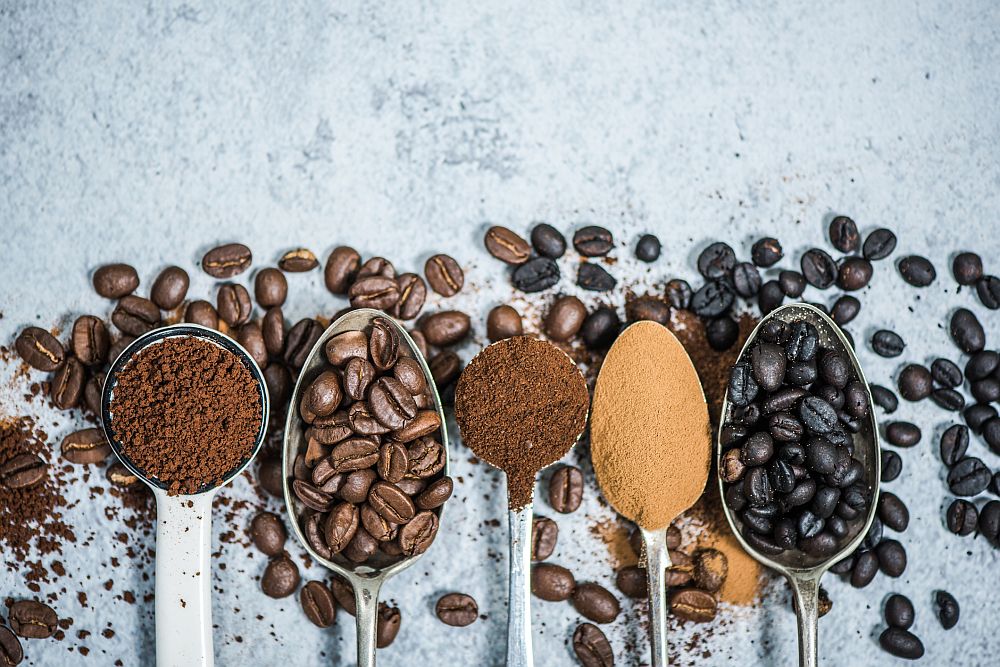
So my fellow java lover, now you’re aware of most of the coffee drinks popular around the world. You may not find all of them listed on the coffee menus but you’ll definitely find some that match your taste.
There are plenty of flavors, you can start with the one that you found closest to your taste buds. How many different coffee flavors you’ve tried yet? Even, I haven’t tried some of them yet and I just can’t wait to try them out.
Did I miss adding any coffee drink to the list? Let me know in the comment section below and I’ll make sure to add it right away.
What’s next?
Scroll a bit below and press the button (given below) of your favorite social platform to share these coffee drink with them too.
You may also be interested in:
Where’s Chennai filter coffee? My favorite ❤️
Exactly. The best in the world.
If you visit Greece or Cyprus never ask for Turkish coffee, it’s kind of an insult, only ask for Greek coffee.
Sadly enough, I’ve not yet tried any of these. Dammit, I’ll do soon! Thank you so much for elaborating the uniqueness of each Cup of joe! It was fun to get to know about them all!
Keep expressing!
You didn’t mention the Marocchino, espresso with some chocolate. It’s very common in in certain areas of Italy and I love it.
Where’s Cafe Touba? It’s a Senegalese coffee drink and it should be here.
Any info on a Spanish latte? When I visited the middle east all of the boutique coffee shops offered them.
I discovered Cortados last year, now I make one everyday! I love going into a coffee house and ordering it. If they’ve heard of it, they know coffee! If they haven’t, they’ve learned something new.
Here’s one more,
Dalgona coffee is a beverage made by whipping equal proportions of instant coffee powder, sugar, and hot water until it becomes creamy and then adding it to cold or hot milk. Occasionally, it is topped with coffee powder, cocoa, crumbled biscuits, or honey.
Wow very good information related coffee and it’s types
Aeropress makes some exceptional coffee.
Likewise French Press. Just black, no sweeteners or dairy. Mmm, yum
I worked as a barista at Starbucks in Orlando’s new stores when they just started becoming popular there. You gave an excellent overview, in detail, of more coffee drinks than they offered then. Nowadays I go there only for an Americano in a tall cup with 5 shoots and 2 ounces of water topped with a small layer of whipped cream. Most people are paying a very high price for milk when they order any of the lattes, flat whites, etc. as they don’t know it’s really not a coffee drink since it has a high majority of milk.
There’s a popular coffee here in my country, named Luwak Coffee. Didn’t really know what kind of coffee does it most refer to, maybe java. But the coffee bean got a special treatment which is given to luwak animal (kinda like a fox). And the luwak’s feces cleaned and ready to grinded as a cup of coffee. It’s usually hot, this coffee type quite popular here.
What are the special benefits of drinking coffee, of any type
There are too many 🙂 But I’ll just write a few in here.